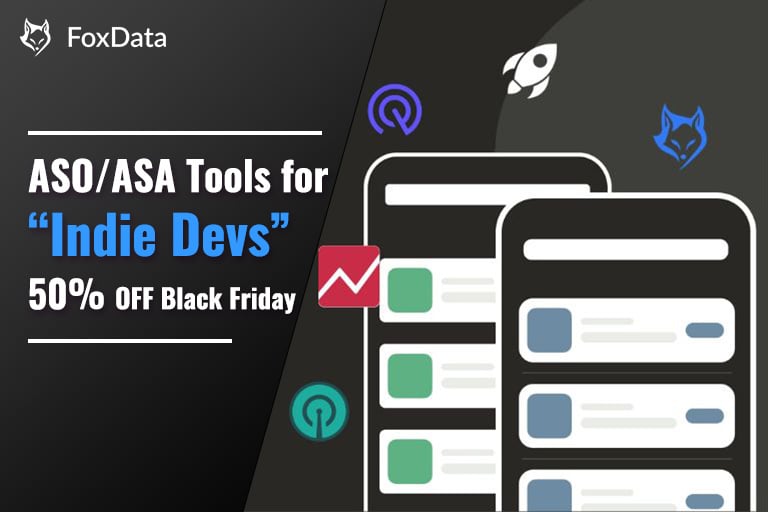Apple Search Ads Account Structure: The Scalable Blueprint for 2025
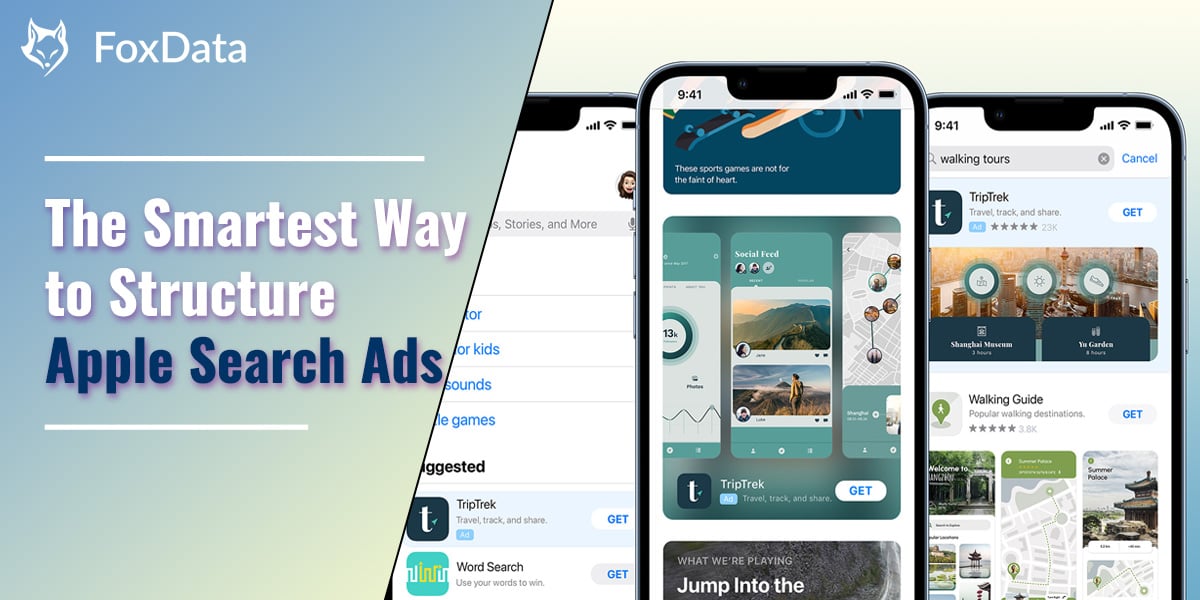
Apple Search Ads (ASA) has quietly become one of the most efficient growth engines in mobile user acquisition. But among all top-performing advertisers, one factor consistently separates winners from money-burners: structure.
A disciplined Apple Ads account structure doesn’t just keep campaigns neat — it turns Apple’s algorithm into a predictable growth system. When you organize around intent, placement, and feedback loops, you gain control of spend, faster learning, and cleaner insights for every market.
This guide walks through a complete, scalable Apple Ads account structure — from taxonomy to creative mapping — and shows how FoxData tools help you build, monitor, and optimize every layer faster.
Why Apple Ads Account Structure Matters More Than Ever
Apple Search Ads now serve in over 60 storefronts and 100+ ad placements. Without a clear structure, your budget gets scattered — and optimization becomes guesswork.
A smart structure helps you:
✅ Scale globally without duplication chaos.
✅ Control bids and budgets with clear visibility.
✅ Identify winning keywords faster through data segmentation.
✅ Automate optimization across categories and performance tiers.
The numbers you can’t ignore:
- Over 800 million people visit the App Store every week.
- 70%+ of App Store visitors use search to discover new apps.
- 65% of all downloads happen directly after a search.
- Search Results ads convert at over 60%, far exceeding most mobile ad networks.
- And when users tap an ad, 95% of downloads happen within one minute — showing just how strong purchase intent is on the App Store.
(Source: Apple)
That means a well-structured Apple Search Ads setup isn’t optional anymore — it’s your growth foundation.🔍 Find Out More: Apple Search Ads Expands to 21 New Markets: Key Insights for Developers
Apple Ads: Know Your Controls Before You Scale
Before you wire your structure, understand the system’s foundation.
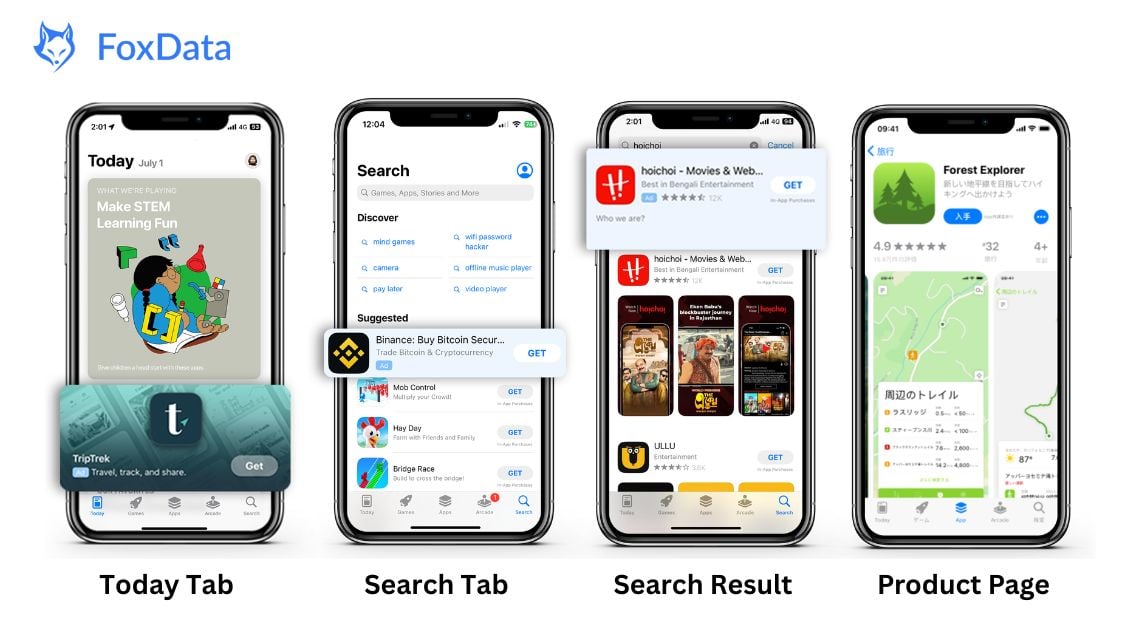
|
Layer |
Function |
Notes |
|
Placements |
Search Results, Search Tab, Today Tab, Product Pages |
Search Results = CPT model; others = CPM |
|
Campaign hierarchy |
Account → Campaign → Ad Group → Keywords |
Standard ASA structure |
|
Targeting controls |
Device, geo, language, audience type |
Keep flexible but avoid fragmentation |
|
Discovery |
Search Match |
Automatically matches to relevant queries |
💡 Tip: Use FoxData’s ASA Keywords dashboard to visualize search volume and competition across placements — helping you decide where to split campaigns and set bid boundaries.
The Scalable Account Structure Framework
Here’s the blueprint used by top developers and agencies to scale Apple Search Ads profitably:
1. One Campaign per Goal or Region
Keep campaigns clean. Each should serve one objective — for example:
- Brand Campaign – Protect your branded terms.
- Category Campaign – Capture high-intent users searching your app type.
- Competitor Campaign – Intercept users considering alternatives.
- Discovery Campaign – Explore new growth keywords via Search Match.
If you’re running in multiple countries, separate by region to isolate performance and avoid data overlap.
2. Ad Groups by Match Type
Inside each campaign, use separate ad groups for Exact, Search Match, and Broad Match.
This structure prevents internal competition and gives you precise control over keyword bids.
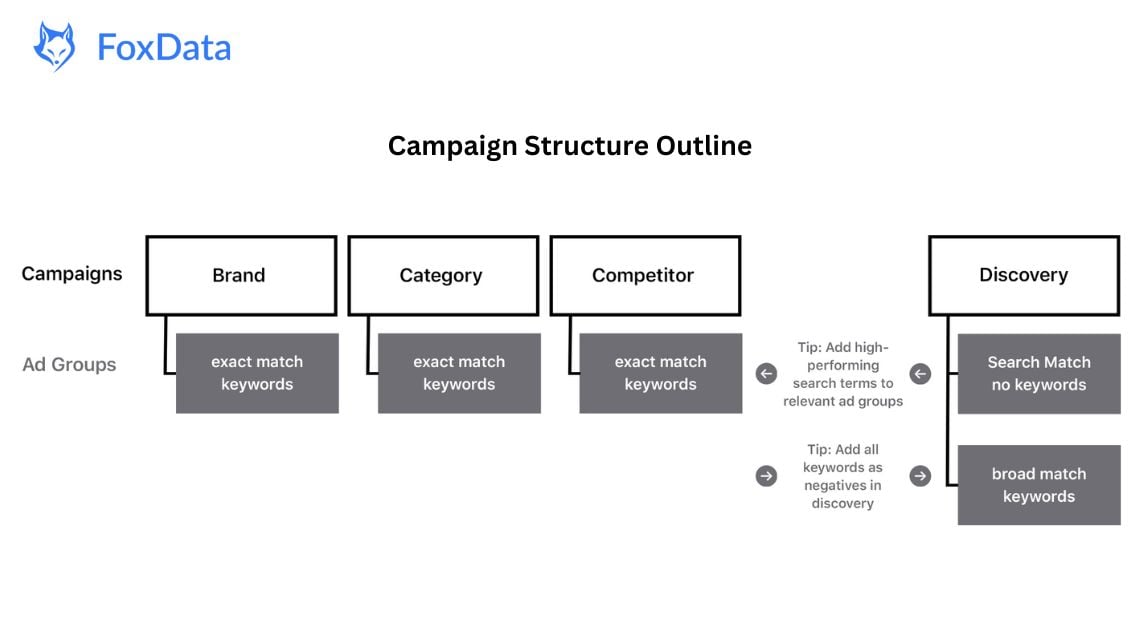
3. Keyword Segmentation by Intent
Organize keywords by intent tier:
- High Intent: your brand or “buy + app name” queries.
- Mid Intent: competitor names or close variants.
- Low Intent: generic category or feature-related searches (“fitness tracker,” “language learning”).
This lets you adjust bids logically — not emotionally.
4. Negative Keyword Control
Use negative keywords to prevent overlap. For example, exclude brand terms from Competitor campaigns.
This keeps reporting clean and prevents wasted impressions.
Campaign Layer: The Foundation of Intent Control
|
Campaign Type |
Goal |
Keyword Type |
Negative Strategy |
Bid Style |
CPP Theme |
|
Brand |
Protect & monetize branded demand |
Exact |
Block generic & competitor |
High CPT (strong ROAS) |
Brand-forward messaging |
|
Generic (category) |
Capture high-intent category searches |
Exact & Broad |
Block brand terms |
Moderate bids |
Feature or benefit focus |
|
Competitor |
Intercept users switching from rivals |
Exact only |
Block brand/ generic |
Conservative bids |
Comparative positioning |
|
Discovery |
Find new keywords via Search Match |
Broad + Search Match |
Block brand & proven exacts |
Low, test-and-learn |
General, adaptable creative |

FoxData Makes Optimization Effortless
Building structure is one thing — keeping it optimized is where growth multiplies.
With FoxData’s ASA Analysis, you don’t need to plan for weeks or analyze for hours. You just log in and act. Everything happens in one clean flow:
1. Find what’s already winning.
Use the Bidding Keywords Tool to instantly uncover high-performing, high-volume terms your competitors are paying for — no brainstorming required.
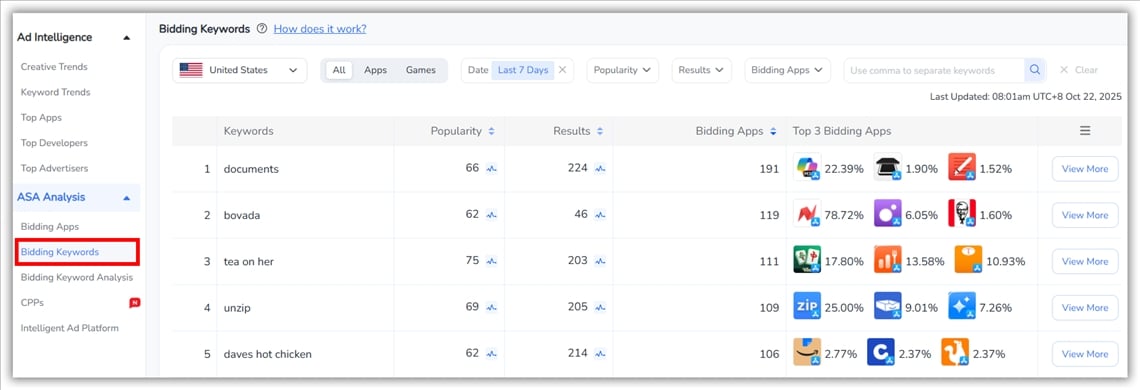
2. See where you stand.
Check Bidding Apps to understand your true market position. Keyword overlaps, category ranking, and CPT gaps surface in seconds — not spreadsheets.
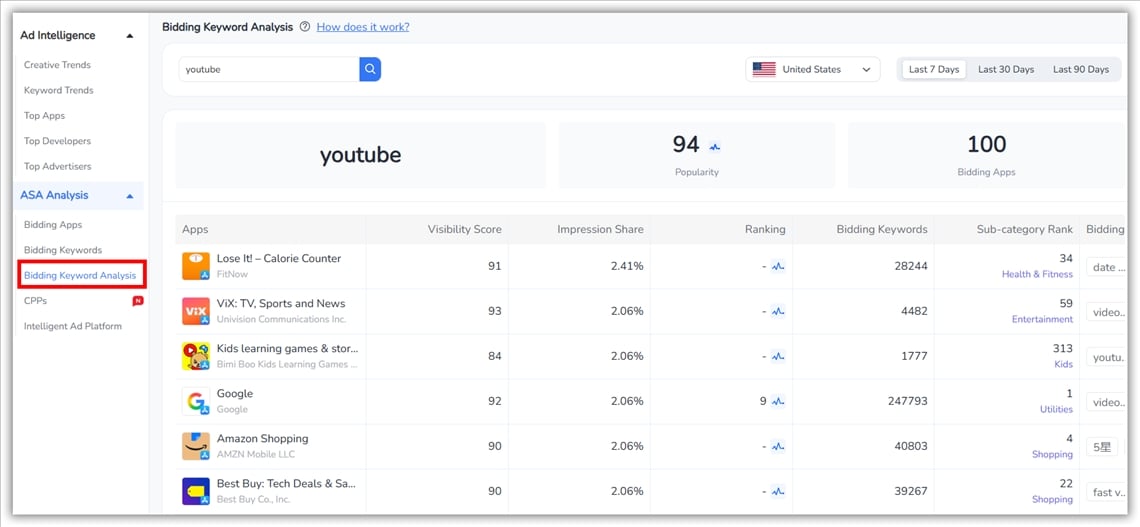
3. Watch what performs.
Your ASA Keywords Dashboard updates live — showing what’s gaining traction, which bids are overpriced, and where untapped potential lies.
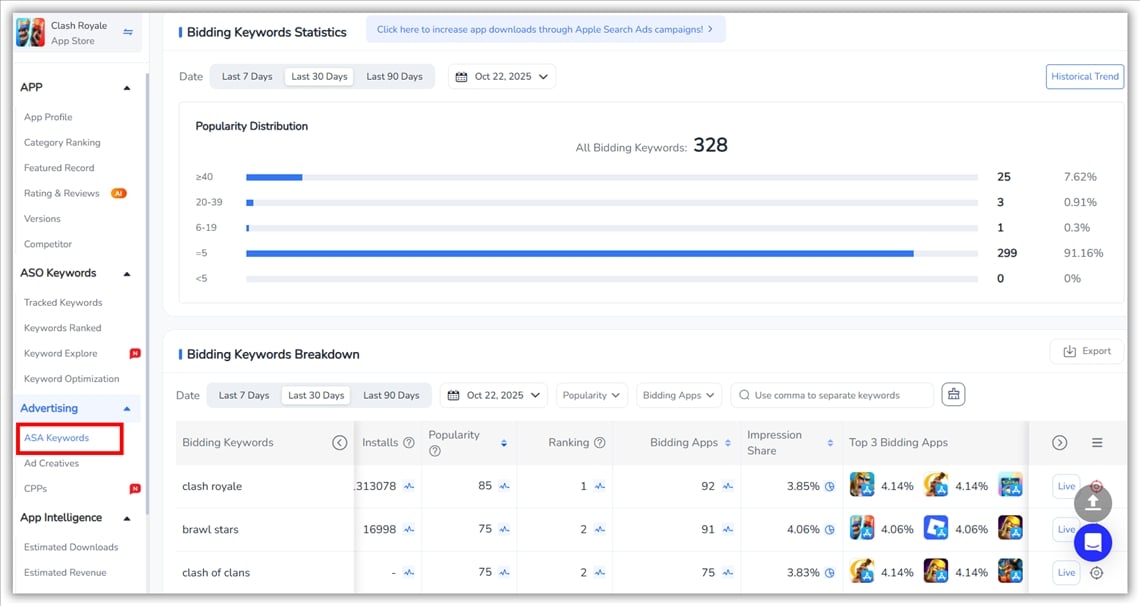
4. Adjust, scale, and win.
Shift budget with ROAS insights — double down on what converts, pause what doesn’t, and scale confidently with data that updates as fast as your users do.
No complex dashboards. No guesswork.
If you’re managing Apple Search Ads in 2025, this is the shortcut every growth team needs.
Just open FoxData, follow the flow, and see measurable results before your next campaign review.
You’ll spend less time managing ads — and more time scaling them.
Common Mistakes to Avoid
Even experienced teams often fall into these traps:
❌ Mixing goals (branding + discovery in one campaign)
❌ Ignoring match types, causing bid conflicts
❌ Skipping negatives, wasting spend
❌ Not localizing campaigns for multilingual storefronts
❌ No regular audits, leading to internal competition
Fixing these can immediately improve efficiency by 20–30%.
The 2025 Blueprint for Scaling
As Apple expands ad placements — from Today Tab to Search Tab to custom product pages — a scalable structure gives you a foundation to grow fast without losing control.
Instead of reacting to data, you’ll build predictable performance loops based on clarity and automation.
And when you plug in FoxData, you can:
🔹Detect keyword opportunities before competitors.
🔹Auto-adjust CPT bids based on volume and cost efficiency.
🔹Track ROAS trends per campaign, ad group, and storefront.
Final Takeaway
Your Apple Search Ads account structure is the single biggest lever for profitability.
A disciplined setup turns chaotic ad spend into controlled, compounding growth.
If you want to scale smarter in 2025 — not just spend more — start with the structure.
⚡ Optimize Smarter, Not Harder
Every wasted dollar in ASA is one you could’ve reinvested into winning keywords.
Build your Apple Search Ads structure the right way — with FoxData.
Optimize smarter, discover growth gaps before competitors, and turn your campaigns into consistent profit drivers.
📌 In Case You Missed It (ICYMI):



